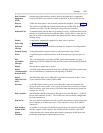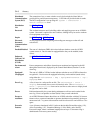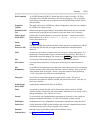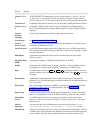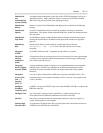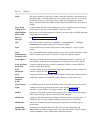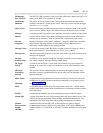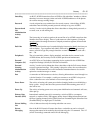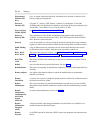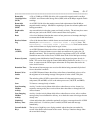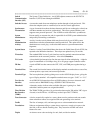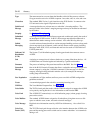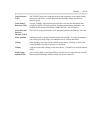
Glossary GL-15
_ ______________________________________________________________________________________
_ ______________________________________________________________________________________
_ ______________________________________________________________________________________
Outcalling An R1V3 AUDIX feature that allows AUDIX to dial subscribers’ numbers to inform
them they have new messages (often used with AUDIX Standalone or if the phones
do not have message-waiting lamps).
Password A code assigned to every terminal user for security reasons. After dialing AUDIX,
subscribers must dial their personal password correctly to log on to AUDIX.
Password and
List
Administration
Activity
Activity 5 on the Activity Menu that allows subscribers to change their password, or
to create, scan, or edit mailing lists.
Path The form string (or location) typed on the second line of an AUDIX screen form that
identifies the form to display. Parts of a path name are called segments. Each part
must be typed with enough characters to uniquely name that segment, followed with
ENTER .
Path Line The second line from the top of a terminal display form used to identify the form you
wish to display. Type segments individually followed by ENTER or a carriage
return; you need to type only enough characters to name a unique form (such as m :
ac : d).
Peripherals The voice terminals, printers, display terminals, and other devices external to the
AUDIX cabinet, but necessary for full AUDIX operation and maintenance.
Personal
Computer (PC)
An AT&T 62xx or 63xx desktop computing device, required for the AUDIX Data
Acquisition Package (ADAP) and Text Service Interface.
Personal
Greeting
Administration
Activity
Activity 3 on the Activity Menu that allows subscribers with the Call Answer feature
to record a personal message. This greeting is played to callers who are redirected to
AUDIX. The Information Service and Automated Attendant features also use this
option for recorded messages or menus.
Port A connection or link between two devices, allowing information to travel through it to
a desired location. For example, a switch port connects to an AUDIX voice port to
allow a subscriber on a voice terminal to leave a message on disk.
Power Down The activity of turning off system power before changing hardware or reinitializing a
faulty system. Always shut down the system software before turning power off, or
data will be lost.
Power Up The activity of turning power on to start system initialization and automatic self-tests;
disks spin up.
Primary Rate
Interface (PRI)
International standard protocol for connecting a switch or PBX to a computer,
network, or another switch. PRI supports twenty-three 64 Kbps information and one
64 Kbps signaling channel [called 23B+D format or Extended Digital Subscriber Line
(Extended DSL)] over high-speed T1 facilities.
Private Mailing
List
A list of addresses that only the owning subscriber can access.
Private
Messaging
One of the R1V4 Executive Features that allows a subscriber to send a voice mail
message that cannot be forwarded by the recipient using the **P command. The **F
(Allow Forwarding) command cancels Private Messaging.



